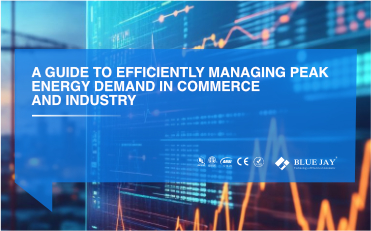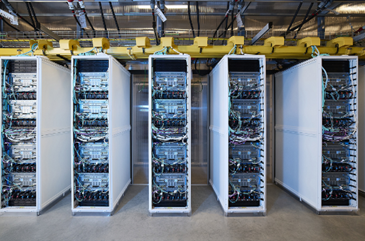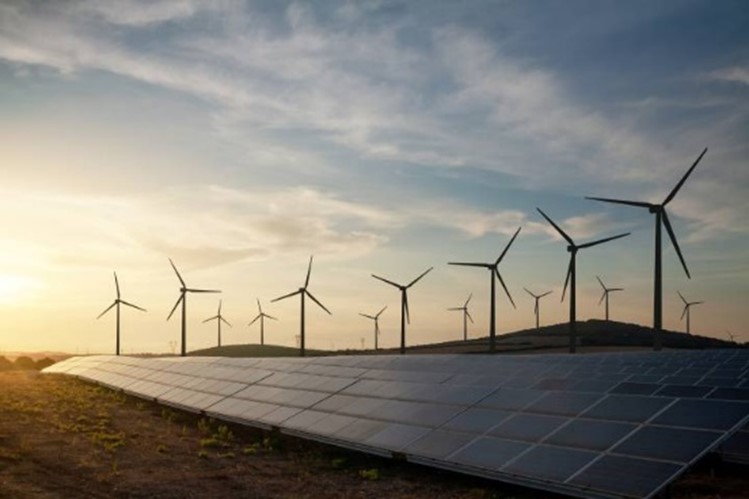

A Guide to Efficiently Managing Peak Energy Demand in Commerce and Industry
By bluejay | Company News
What is Peak Energy Demand
Peak energy demand refers to periods when electricity consumption reaches exceptionally high levels. These peaks place stress on both the power grid and facility infrastructure, directly impacting operational costs and equipment longevity. Effectively identifying and managing peak demand is crucial for reducing energy expenses, improving equipment reliability, and optimizing overall energy usage.
Causes of Peak Energy Demand in Commercial and Industrial Settings
Data Center and AI Cooling Loads: High-density AI servers require substantial power, and their associated cooling systems often operate continuously at full capacity, creating sustained, significant peak loads.

Concentrated EV Charging: Commercial fleets or employee electric vehicles often charge simultaneously during peak hours, such as the start or end of the workday. Multiple DC fast chargers operating concurrently can generate sharp, short-term demand spikes.

Renewable Energy Variability and Grid Fluctuations: Solar and other distributed energy sources decline rapidly at dusk, while commercial and residential consumption remains high. This mismatch creates temporary supply gaps and drives up peak demand and energy costs.

Seasonal Heating and Cooling Loads: In summer, simultaneous operation of air conditioning units, chillers, and cooling towers can generate substantial peak loads. In winter, electrically powered heating systems such as heat pumps or resistive heaters create similar high-demand periods.
Simultaneous Equipment Start-Up: Industrial processes with multiple large motors, pumps, or production equipment starting simultaneously can produce surge currents, leading to instantaneous peak demand.
How can peak energy demand be effectively managed through energy meters?
Managing peak energy demand through multi-function or multi-channel meters is a data-driven, automated energy management strategy, centered around maximum demand control and demand-side response. To effectively manage energy demand, users typically need to establish a closed-loop control system with high-precision energy meters as the data source and a core energy management system at its core.
Multi-channel meters or sub-meters are installed at critical high-energy-consuming areas or equipment (such as HVAC units, large compressors, lighting systems, electric vehicle charging facilities, and major production lines). This enables load itemization and differentiates the contribution of different loads to total demand.
Multi-function meters are installed at the main incoming line, capable of measuring and recording parameters such as voltage, current, active power, reactive power, power factor, and harmonics. All meter data is then synchronized and transmitted in real time to a central energy management system or building automation system (BAS) via industrial communication protocols.
Finally, by monitoring the collected data in real time, you can clearly understand energy usage (such as which systems are the largest energy consumers) and implement effective peak energy demand management measures (such as implementing automatic alerts for abnormal energy peaks to prevent costly accidents; adjusting schedules and equipment usage to shift non-essential loads to off-peak hours).
Benefits of Peak Demand Management
- Cost Reduction: Shifting or reducing peak loads lowers electricity bills, particularly under demand-based tariffs and time-of-use pricing
- Enhanced Grid and Equipment Reliability: Smoothing load reduces stress on transformers, switchgear, and cabling, minimizing failure risks
- Extended Equipment Lifespan: Reduces thermal and mechanical stress on motors, pumps, and HVAC equipment caused by high-current surges
- Support for Sustainability: Optimizing peak loads decreases reliance on peak-time generation, reducing energy waste and carbon emissions.
Maximum Demand vs. Peak Demand
- Maximum Demand: The highest average load over a defined interval (e.g., 15 or 30 minutes), reflecting sustained high consumption.
- Peak Demand: The absolute highest instantaneous load observed, often occurring during simultaneous equipment start-ups or transient events.
Understanding the distinction is essential for accurate energy measurement, cost control, and effective load management strategies.
Related Articles


Blue Jay Complete Energy Metering Solutions
Energy metering solutions extend far beyond billing; they are

Multi-load Metering -Reducing energy consumption in buildings
Multi-load metering is one of the good solutions for
Tags
Company News
What is Peak Energy Demand
Peak energy demand refers to periods when electricity consumption reaches exceptionally high levels. These peaks place stress on both the power grid and facility infrastructure, directly impacting operational costs and equipment longevity. Effectively identifying and managing peak demand is crucial for reducing energy expenses, improving equipment reliability, and optimizing overall energy usage.
Causes of Peak Energy Demand in Commercial and Industrial Settings
Data Center and AI Cooling Loads: High-density AI servers require substantial power, and their associated cooling systems often operate continuously at full capacity, creating sustained, significant peak loads.

Concentrated EV Charging: Commercial fleets or employee electric vehicles often charge simultaneously during peak hours, such as the start or end of the workday. Multiple DC fast chargers operating concurrently can generate sharp, short-term demand spikes.

Renewable Energy Variability and Grid Fluctuations: Solar and other distributed energy sources decline rapidly at dusk, while commercial and residential consumption remains high. This mismatch creates temporary supply gaps and drives up peak demand and energy costs.

Seasonal Heating and Cooling Loads: In summer, simultaneous operation of air conditioning units, chillers, and cooling towers can generate substantial peak loads. In winter, electrically powered heating systems such as heat pumps or resistive heaters create similar high-demand periods.
Simultaneous Equipment Start-Up: Industrial processes with multiple large motors, pumps, or production equipment starting simultaneously can produce surge currents, leading to instantaneous peak demand.
How can peak energy demand be effectively managed through energy meters?
Managing peak energy demand through multi-function or multi-channel meters is a data-driven, automated energy management strategy, centered around maximum demand control and demand-side response. To effectively manage energy demand, users typically need to establish a closed-loop control system with high-precision energy meters as the data source and a core energy management system at its core.
Multi-channel meters or sub-meters are installed at critical high-energy-consuming areas or equipment (such as HVAC units, large compressors, lighting systems, electric vehicle charging facilities, and major production lines). This enables load itemization and differentiates the contribution of different loads to total demand.
Multi-function meters are installed at the main incoming line, capable of measuring and recording parameters such as voltage, current, active power, reactive power, power factor, and harmonics. All meter data is then synchronized and transmitted in real time to a central energy management system or building automation system (BAS) via industrial communication protocols.
Finally, by monitoring the collected data in real time, you can clearly understand energy usage (such as which systems are the largest energy consumers) and implement effective peak energy demand management measures (such as implementing automatic alerts for abnormal energy peaks to prevent costly accidents; adjusting schedules and equipment usage to shift non-essential loads to off-peak hours).
Benefits of Peak Demand Management
- Cost Reduction: Shifting or reducing peak loads lowers electricity bills, particularly under demand-based tariffs and time-of-use pricing
- Enhanced Grid and Equipment Reliability: Smoothing load reduces stress on transformers, switchgear, and cabling, minimizing failure risks
- Extended Equipment Lifespan: Reduces thermal and mechanical stress on motors, pumps, and HVAC equipment caused by high-current surges
- Support for Sustainability: Optimizing peak loads decreases reliance on peak-time generation, reducing energy waste and carbon emissions.
Maximum Demand vs. Peak Demand
- Maximum Demand: The highest average load over a defined interval (e.g., 15 or 30 minutes), reflecting sustained high consumption.
- Peak Demand: The absolute highest instantaneous load observed, often occurring during simultaneous equipment start-ups or transient events.
Understanding the distinction is essential for accurate energy measurement, cost control, and effective load management strategies.
Related Articles


Blue Jay Complete Energy Metering Solutions
Energy metering solutions extend far beyond billing; they are

Multi-load Metering -Reducing energy consumption in buildings
Multi-load metering is one of the good solutions for




